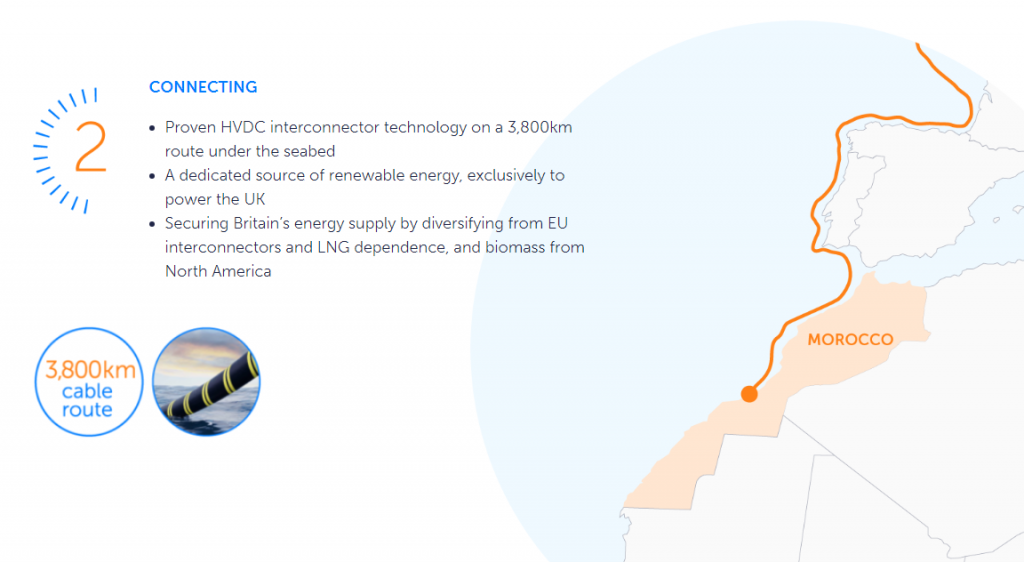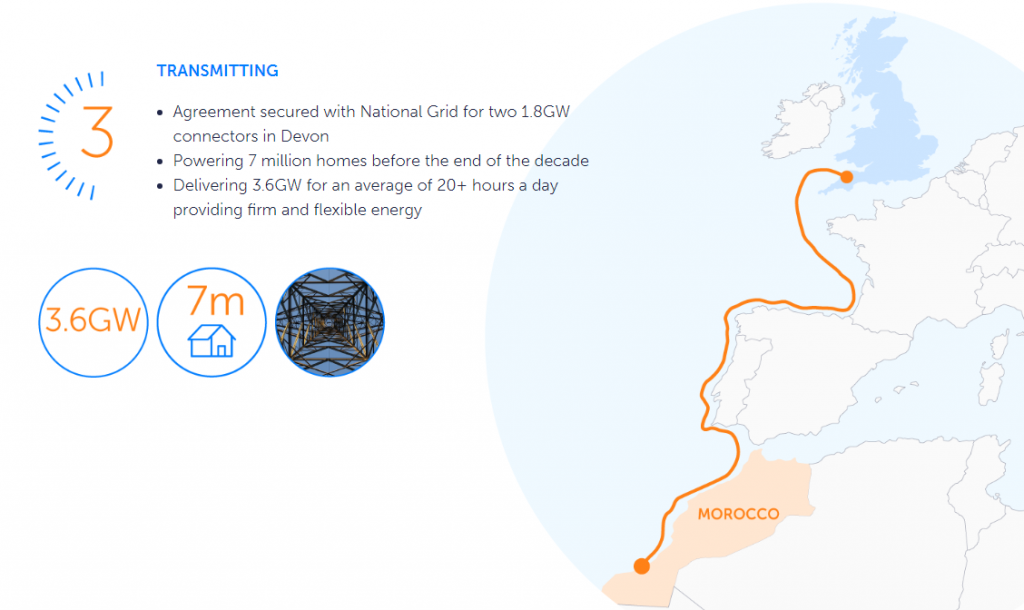The Xlinks Morocco-UK Power Project is a proposal to create a large-scale renewable energy complex in Morocco and feed the electricity to the UK via a long underwater cable.
Key facts
12 million solar panels, 530 wind turbines over 62 square miles.
- The project aims to produce 10.5 GW of clean power from solar and wind facilities in Morocco’s Guelmim Oued Noun region. This is equivalent to about 10% of the UK’s electricity demand.
- The project also plans to build a 20 GWh/5 GW battery storage facility to ensure a stable and reliable supply of electricity.

- The project will use proven high-voltage direct current (HVDC) interconnector technology to transmit the electricity to the UK via a 3,800 km route under the seabed. The cable will connect to two locations in Devon and Wales, each with a capacity of 1.8 GW.
- The project will create over 11,000 new green jobs in the UK and Morocco, and contribute to their renewable industrial ambitions. It will also diversify the UK’s energy sources and reduce its dependence on EU interconnectors, LNG imports, and biomass from North America.

- The project is seeking a 25-year contract with the UK government to guarantee a fixed electricity price and secure financing for the £20 billion investment.
- It hopes to start construction in 2024 and deliver power to the UK by 2028.
Entirely powered by sun and wind
The Xlinks Morocco-UK Power Project will be a new electricity generation facility entirely powered by solar and wind energy combined with a battery storage facility. Located in Morocco’s renewable energy rich region of Guelmim Oued Noun, it will be connected exclusively to Great Britain via 3,800km HVDC sub-sea cables.

Zero carbon power generation
When domestic renewable energy generation in the United Kingdom drops due to low winds and short periods of sun, the project will harvest the benefits of long hours of sun in Morocco alongside the consistency of its convection Trade Winds, to provide a firm but flexible source of zero-carbon electricity.


